- Applications
- Antenna Design
Antenna Simulation Software for Design and Modeling
Antenna technology is constantly advancing to meet the growing demands of industry. Likewise, Remcom has been keeping pace in order to provide engineers with antenna simulation software that matches their processes and helps them meet their device design requirements.
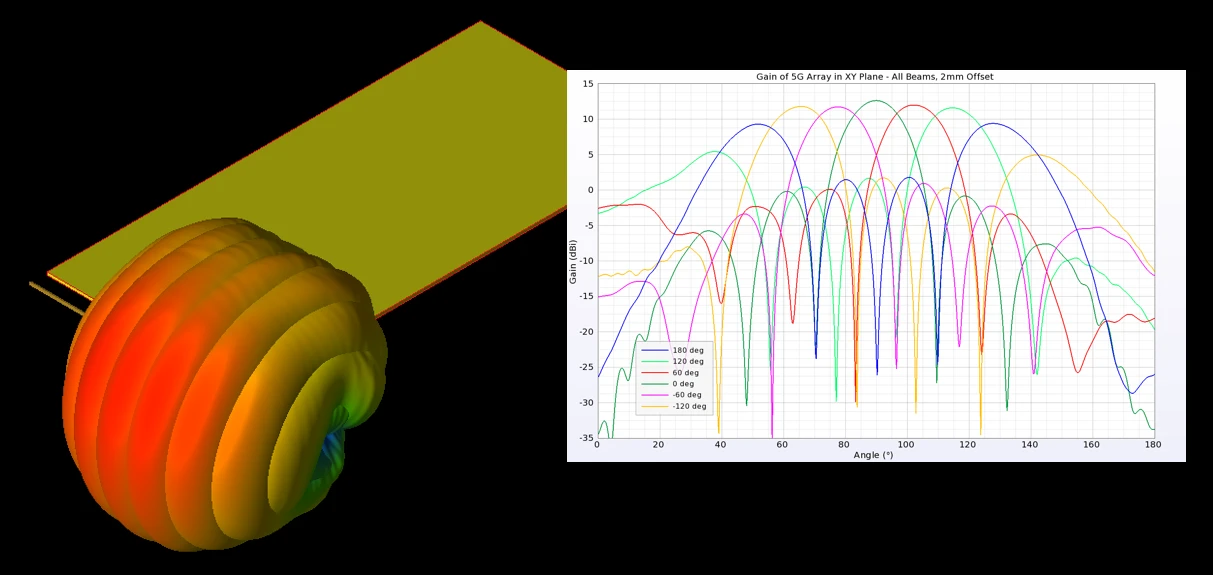
Antenna Design Simulation Workflow
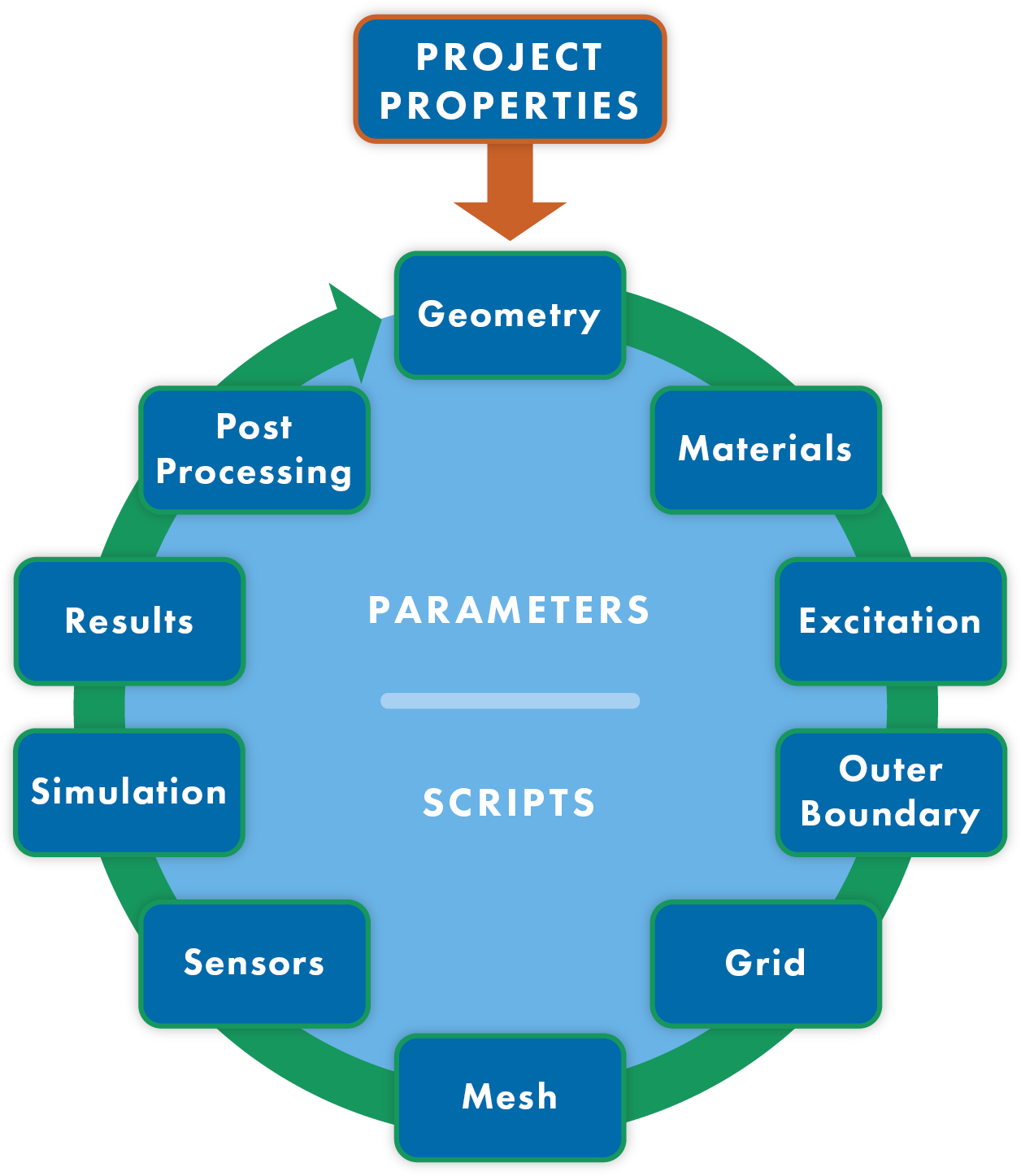
-
Set up project properties, frequency range, and more.
-
Import 3D CAD files, PCB databases, and create or modify geometry.
-
Specify the EM properties of materials.
-
Add voltage sources or modal field distributions.
-
Apply outer boundaries.
-
Discretize the 3D CAD space into cells.
-
Associate a material with each cell edge improve accuracy via Fast Intelligent Meshing.
-
Request sensor results.
-
Examine results and view output.
-
Execute FDTD simulation.
-
Analyze matching networks and port phase combinations with superposition for beamforming via post-processing tools.
-
Parameterize the project and perform parametric analysis.
-
Customize via scripts to automate repetitive tasks.
XFdtd 3D Electromagnetic Simulation Software
Antennas are ubiquitous in today’s technology and span the spectrum from low frequency, to microwaves, to terahertz and beyond. Our XFdtd 3D Electromagnetic Simulation Software is a full-wave solver based on the Finite-Difference Time-Domain (FDTD) method and is well-suited for analyzing designs ranging from simple dipoles and patches to the latest mobile devices consisting of hundreds of components and multiple antennas. The advanced processing features in XFdtd are also capable of handling fifth generation cellular standards at millimeter wave frequencies that involve antenna arrays and more complex processing.
XFdtd includes full-wave, static, bio-thermal, optimization, and circuit solvers to tackle a wide variety of applications. It also works with Remcom’s ray-tracing products to provide thorough simulation capability at the low-, middle-, and high-end of the electromagnetic spectrum.
-
In-depth analysis of 5G-capable devices and 5G arrays
-
Accurate meshing of curved geometry via XACT Accurate Cell Technology®
-
Circuit Element Optimizer
-
Transient EM/circuit co-simulation
-
PrOGrid Project Optimized Gridding®


.webp?width=1200&length=1200&name=detailed_5g_phone_patternv7%20(1).webp)
Benefits of the FDTD Method for Antenna Simulation
While many electromagnetic simulation techniques are applied in the frequency-domain, FDTD solves Maxwell’s equations in the time domain, with EM field values being calculated progressively at discrete steps in time. The FDTD method has several unique benefits when simulating antennas:
-
Excellent scaling performance of the method as the problem size grows
-
Broadband output provided via a single execution of the program
-
More efficient than other EM methods as the number of unknowns increases
-
Simulates a wide variety of electric and magnetic materials
-
Advancements such as XFdtd’s XACT Accurate Cell Technology® resolve complex curved surfaces, reducing simulation time while improving accuracy of extremely intricate designs.
-
Preferred method for performing EM simulations for biological effects from wireless devices [1]
-
Most efficient approach for achieving accurate results of field penetration into biological tissues
XFdtd Antenna Simulation Applications
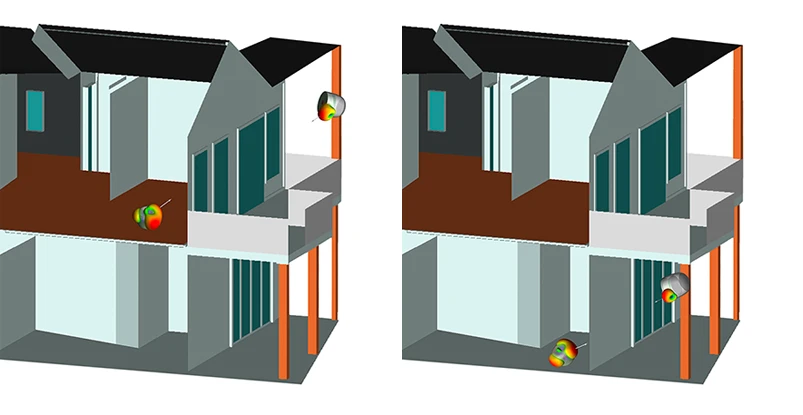
Antenna engineers have long used EM software for optimizing designs virtually, reducing the expense and time of fabricating hardware prototypes while rapidly evaluating numerous device configurations. The vast simulation space covered by XFdtd encompasses all antenna designs, from basic, traditional antennas to cutting-edge, next-generation 6G devices in the terahertz range and beyond. Here are just a few examples of the wide variety of antenna applications for which XFdtd can be used:
-
5G antenna arrays at millimeter wave frequencies
-
Internet-of-Things (IoT) devices such as smart speakers and cameras
-
Wire antennas
-
Microstrip patches
-
Horn antennas
XFdtd simulations are capable of analyzing very complex devices efficiently and are not limited by any computational barriers; projects spanning over 500 cubic wavelengths are possible.
Learn more about XFdtd’s High Performance Computing Options for EM simulations.
XFdtd Antenna Simulation Software Benefits
Straightforward Analysis Process
Sophisticated device designs can be created in XFdtd using a full-featured CAD modeler or imported files in many standard formats. Virtually all aspects of a project may be parameterized, allowing for rapid characterization of design variables. Simulated devices may be excited by an assortment of input options, such as point source voltages and currents or distributed sources including a variety of waveguide ports. Gain, efficiency, impedance, S-parameters, and dissipated power are all common output quantities that are generated. Data specific to the interaction of fields with biological tissues is also available such as Specific Absorption Rate (SAR) and Power Density distributions.
Advanced Post Processing Options
State-of-the-art analysis tools must go beyond traditional results to handle the needs of IoT/Connected Home, 5G, and upcoming 6G devices. Antenna array analysis tools that can rapidly process data to define and optimize the performance of complex beamforming systems containing hundreds or more elements are essential. Understanding the full coverage of a gain pattern using advanced processing techniques like the cumulative distribution function of the effective isotropic radiated power (CDF of EIRP) is critical for antenna designers, and XFdtd meets this need. In addition, for many communication systems employing Multiple-Input Multiple-Output (MIMO), including cellular base stations and WiFi hubs, the interactions between elements is crucial. The MIMO tools in XFdtd can compute quantities such as isolation and envelope cross correlation, which ensure proper operation.

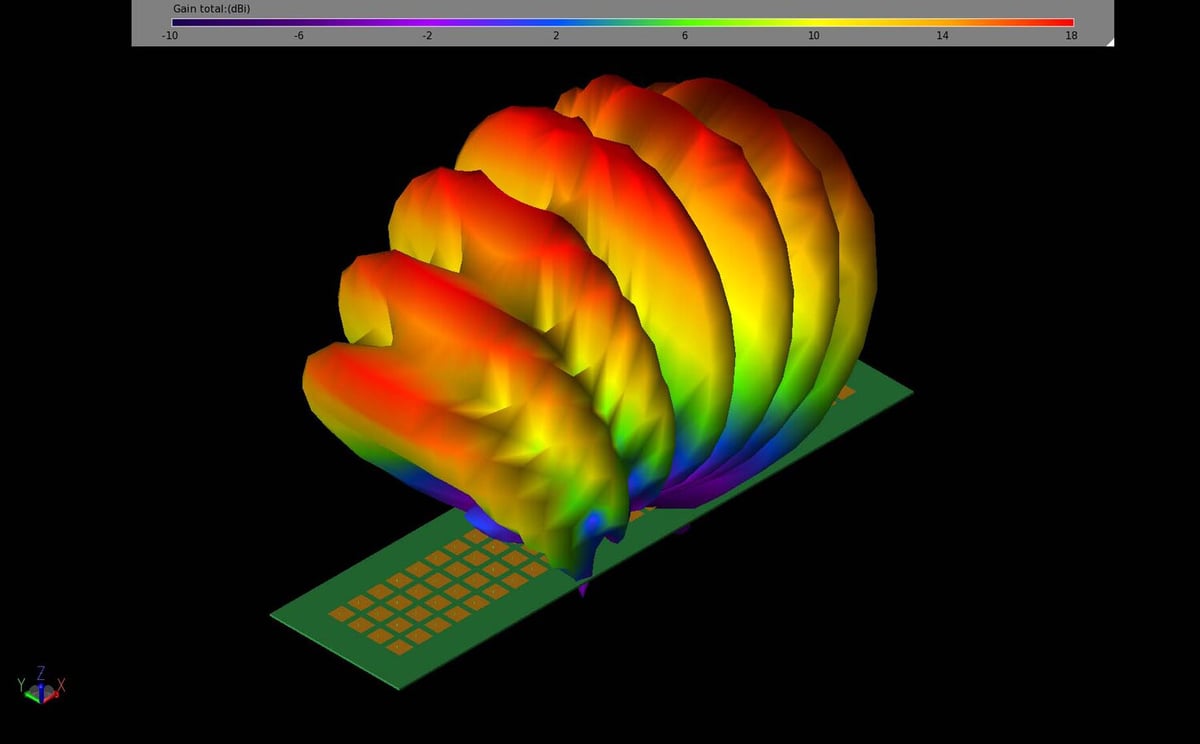


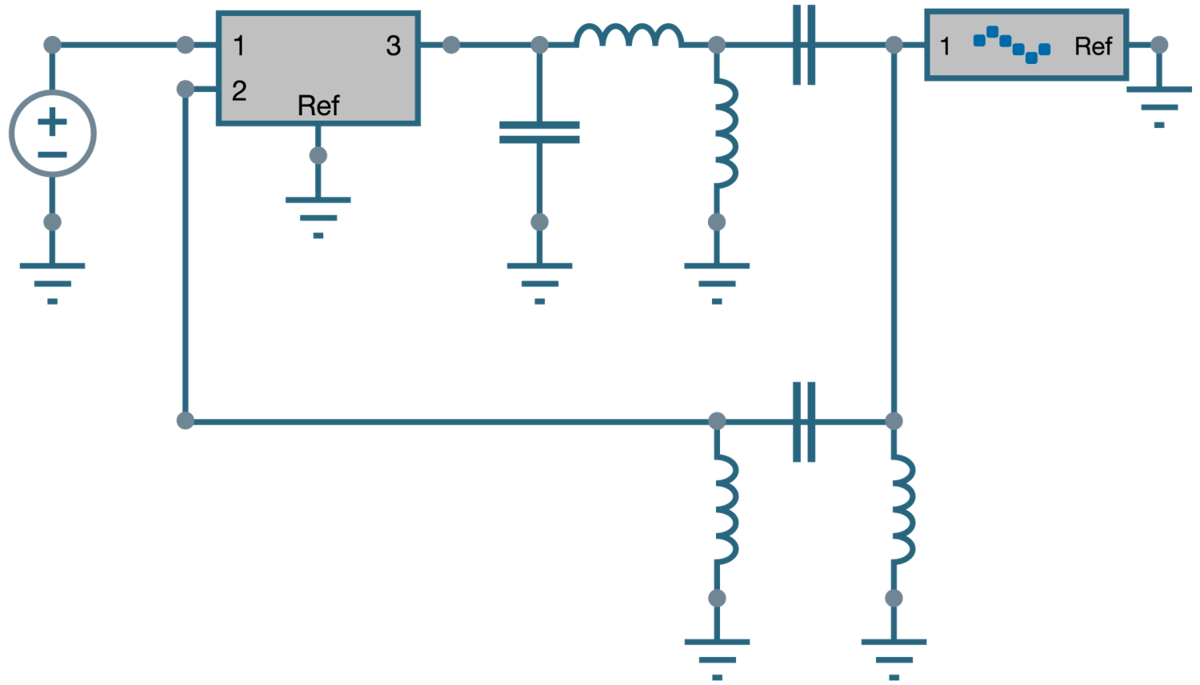

Antenna Matching Circuit Design and Optimization Included
The days of designing and tuning an antenna for a single frequency are over as current devices have to connect efficiently on multiple bands through the use of matching circuits. XFdtd has sophisticated tools available for matching circuit analysis, including the Circuit Element Optimizer (CEO), which can tune antennas for multiple bands while including the electromagnetic effects of the structure surrounding the circuit; this is especially important for cellular phone designers. More complex circuits can be included with circuit co-simulation, which runs parallel FDTD and circuit solvers together to include the effects of chip components from common manufacturers or multi-port matching networks using SPICE models. XFdtd also includes integration with the matching circuit design software Optenni Lab, which can determine the optimal matching network topology.
Reference:
1. C95.3.2002, “Recommended Practice for Measurements and Computations with Respect to Human Exposure to Radio Frequency Electromagnetic Fields, 100kHz to 300GHz,” IEEE Standards and Coordinating Committee 28 on Non-Ionizing Radiation Hazards, April 2002.
Additional Information
-

Webinars
Overview of XFdtd's Schematic Editor and Optimization for Matching Network Design
This webinar demonstrates the full range of features available to users, with a focus on recent updates that include optimization of component values, impedance and aperture tuners with tune codes, and system efficiency results.
See All Antenna Simulation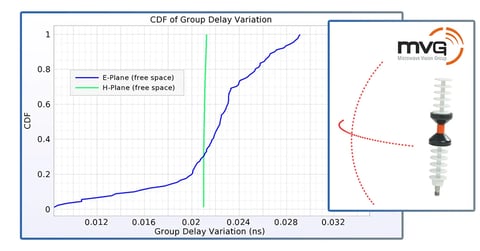
Webinars
Market Research Webinar: Group Delay for an Ultra Wide Band Antenna
In this webinar, XFdtd's product team discusses group delay for UWB antennas.
See All Antenna Simulation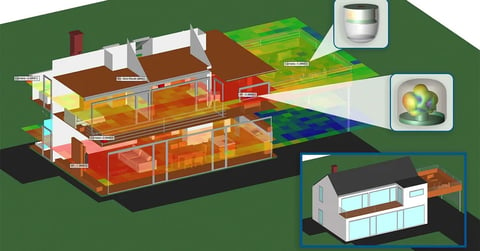
Webinars
Smart Home Device Design and WiFi Connectivity Using EM Simulation
This webinar demonstrates the strengths of Remcom’s XFdtd and Wireless InSite for designing and simulating smart home devices, analyzing propagation and beamforming capabilities, and assessing throughput performance of the devices via MIMO techniques.
See All Antenna Simulation -
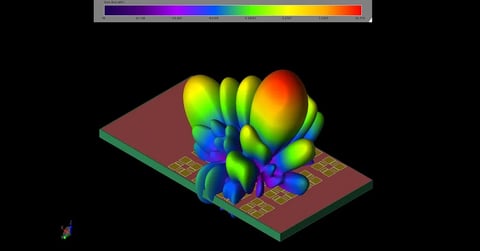
Application Examples
XFdtd Analysis of a Ku-band Satellite Antenna Array for Mobile Devices
In this example, a compact Ku-band antenna array is demonstrated for use in mobile device applications. The antenna is tuned for 12.5 GHz operation and contains a 4x4 array of elements which each consist of a set of patch antennas oriented and phased to produce a circularly-polarized far field pattern. The antenna array has peak gain over 20.7 dBi with sidelobes less than 8 dBi and a 3 dB beamwidth of about 15 degrees.
See All Antenna Simulation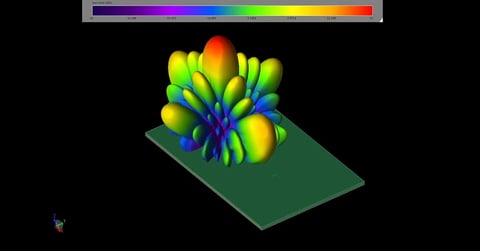
Application Examples
EM Simulation of 140 GHz Antenna Array for 6G Wireless Communication
A 140 GHz slot antenna array excited by a substrate integrated cavity is demonstrated for use in wireless communications. The antenna array has high gain, wide bandwidth, low fabrication costs, and small size, which make it an effective design. The final 8x8 antenna array has bandwidth from 130 to 145 GHz, peak gain of 20.5 dBi, and radiation efficiency around 60%.
See All Antenna Simulation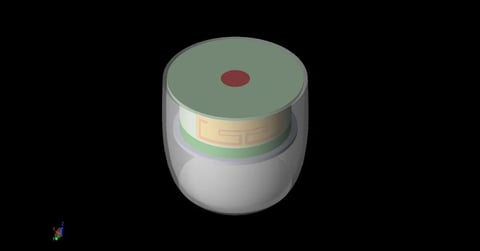
Application Examples
Indoor Connected Home Remote Camera Performance Analysis with XFdtd
This example demonstrates the performance of a remote camera with two-element antenna arrays for 2.4, 5, and 6 GHz capabilities for 802.11 a/b/g/n/ac/ax. The maximum coverage possible at each frequency is discussed to demonstrate the capabilities of the device as part of a connected home system communicating with a MU-MIMO router.
See All Antenna Simulation -
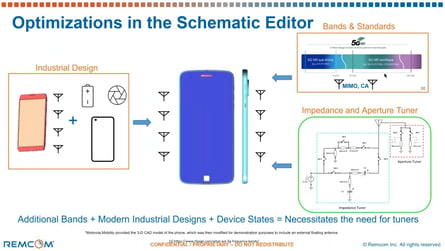
Videos
Impedance Tuner Matching in XFdtd
This presentation will demonstrate the advantages of using XFdtd for complex matching network design.
See All Antenna Simulation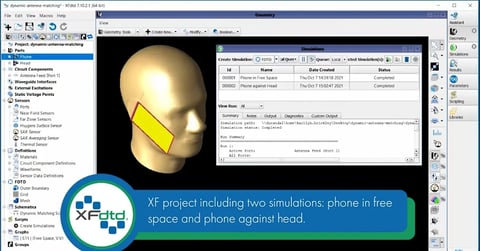
Videos
Dynamic Matched Antenna Using XFdtd’s Schematic Editor
In this video tutorial, an antenna's intrinsic impedance is simulated for two conditions--in free space and against a head. A three-port switch with two possible states is also included.
See All Antenna Simulation2.webp?width=480&height=251&name=maxresdefault%20(2)2.webp)
Videos
Tune a Tunable Matched Antenna Using XFdtd’s Schematic Editor
In this tutorial, we demonstrate the ease of adjusting or tuning, multiple operating modes so that capacitance values match various frequency bands. Using XF’s schematic editor with tuning slider bars, the correct values can be found in moments.
See All Antenna Simulation -

Publications
What’s New in XFdtd®
XFdtd Release 7.11.1 introduces several enhancements designed to elevate simulation accuracy, expand analysis capabilities, and streamline the engineering workflow. This release reflects Remcom’s continued focus on solving high-value challenges in antenna design, PCB modeling, and phased array system development.
See All Antenna Simulation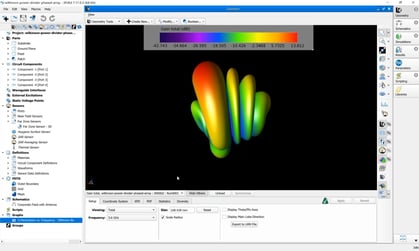
Publications
Mastering XFdtd’s Schematic Editor: A Comprehensive Overview
Dive into the capabilities of XFdtd’s schematic editor and discover how it transforms schematic creation, analysis, and optimization in engineering.
See All Antenna Simulation
Publications
Using Custom Antennas in IoT
Custom antennas are vital for seamless IoT connectivity, catering to diverse applications with specialized requirements.
See All Antenna Simulation
Save time and reduce costs.
Contact Remcom today for a customized solution to your most complex electromagnetic challenges.
Request a Quote